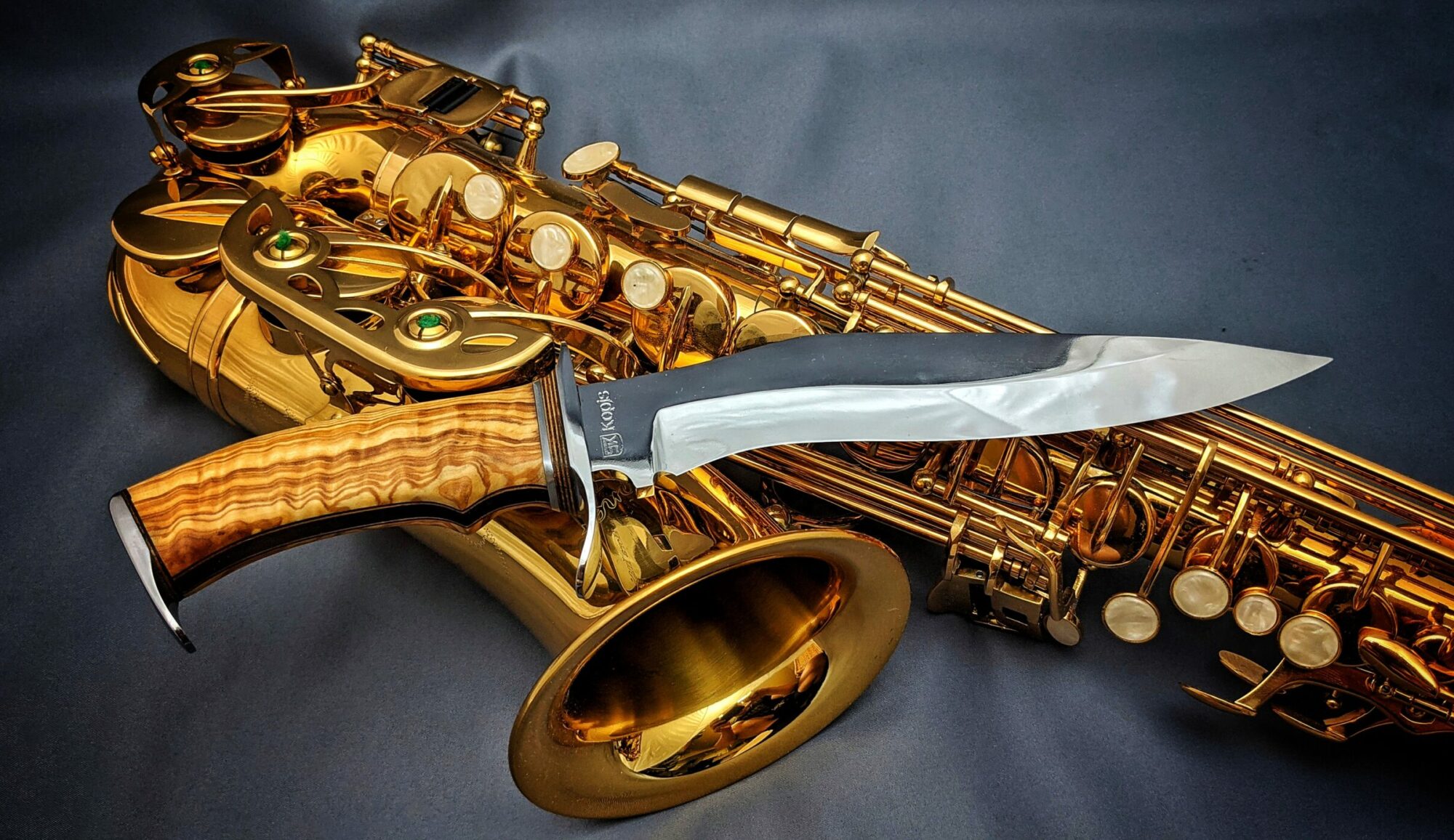Sometimes I get asked: How should I treat my new knife?
I respect and like this question, as it shows how much value the owner of my work sees in his knife. He wants to treat it right and preserve it to use it for a very long time.
First of all: My knives are intended to be used. So use them … but as a knife. Steel cutting, hammering nails, or other odd uses are not recommended. If you are a collector and like to put it in a showcase that is also fine.
If you only had knives from the supermarket you most probably put them into the dishwasher when they were dirty. Or you own an industry outdoor knife there are some things to know though:
Carbon Steel
I use high carbon steel for all my blades, which means they are not stainless. You should treat them like a soldier cares for his firearm. The best is to wipe them off directly after use, especially if the blade was in contact with acidic substances like fruit juices. If possible rinse it with clear water and if needed a mild soap. Wipe the blade dry. This is enough for most cases. From time to time the blade likes to be treated with some olive oil. This protects it from rust.
Something to know about non-stainless steel: When your knife is new it has a perfect silverish surface finish. The more you use your knife you will notice there will be coloured, blueish or grey areas. The steel reacts with the surfaces it comes into contact with. As long as it is protected from rust this is perfectly fine – even better: the colored areas are protected from rust. Have you seen the surface of old anvils or vices? They have a very dark surface, this is a patina that developed over years and is extra hard and protects the steel from rust. While it is possible to re-polish the blade of your knife I do not recommend to do so – let your knife develop its own personality and character.
Wooden handles
I do not paint the wood of my knife handles. I let the surface of the wood open and breathable. If I would use paint to give my handles a shiny finish (which would look awesome without doubt), the wood could not breathe and “work” anymore. Even worse: moisture that gets into the handle through tiny scratches in the paint could not come out and the handle would not look good anymore. I treat my handles with boiled linseed oil varnish and let it soak in with multiple layers. This protects the surface from moisture and gives the handle a satin finish.
To preserve the look of your handle you can use some linseed oil varnish from your local tool shop and rub it into the handle from time to time. I also made good experiences with some drops of olive oil. Olive oil does not get tacky in contrast to sunflower or rape oil. Just rub it in, let it dry a bit, and polish the handle afterward.
Leather sheath
If your knife came with a leather sheath you can use some leather fat from time to time to give it back a protective layer and get back that shine. Just as you would treat good outdoor leather shoes or boots, too.
Leather is a tiny bit hygroscopic. So if you are not using the knife for a longer period of time it might make sense to check if the leather is staining the blade a bit. I never had this occur to my own self-made knives, this is just theoretical knowledge. Probably the leather fat plus the drops of oil on my blades form a protective layer inside the sheath.

